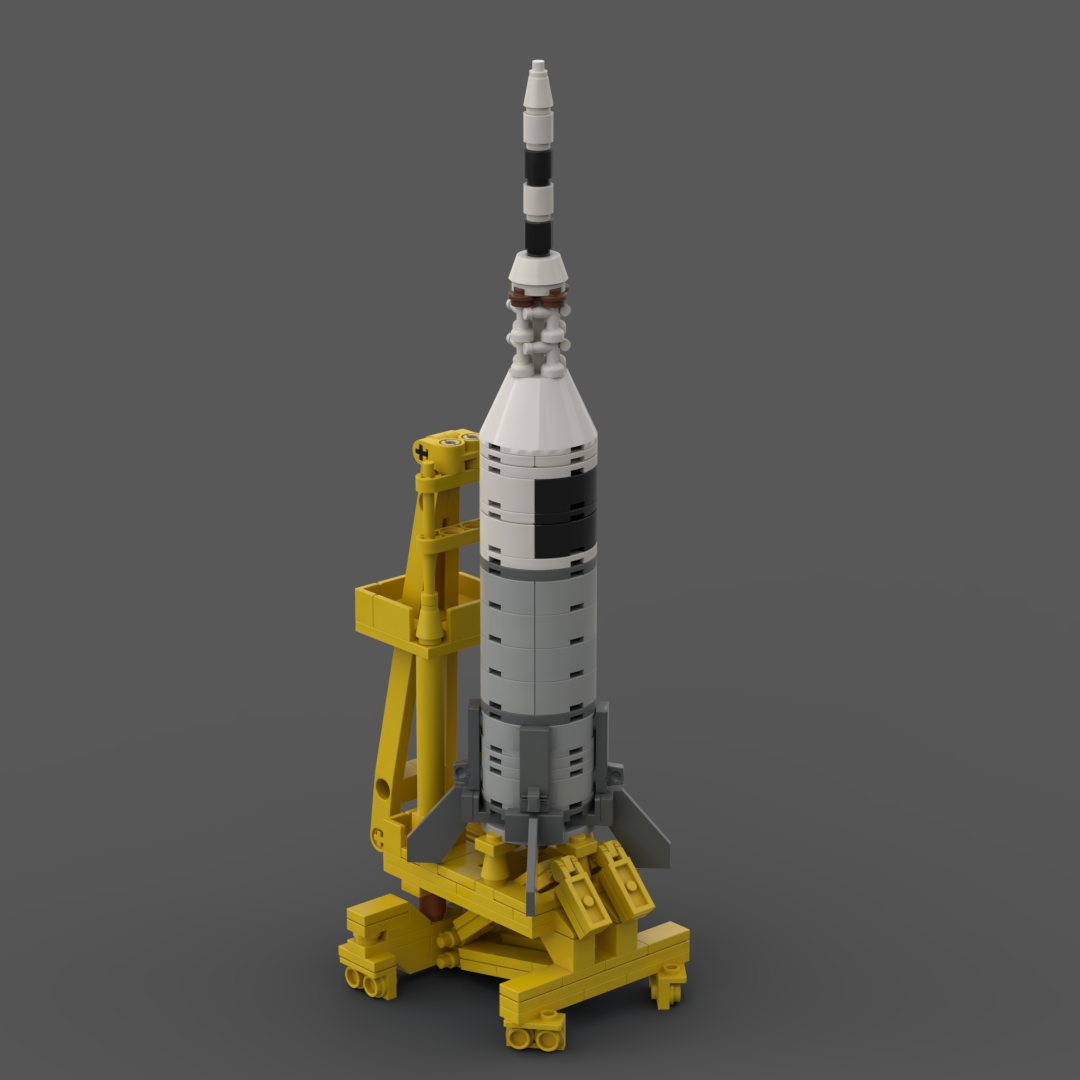
LEGO Designer:
Adam Wilde (Apollo 110)
Designed:
October 2020
Categories:
Apollo Program, All, Launch Vehicles, Space Agency - NASA, Suborbital and Sounding Rockets
Launch Vehicle Details
Stages:
Length:
Diameter:
Mass at Launch:
Low Earth Orbit Capacity:
Total Thrust:
Apogee:
Class:
Little Joe II was an enlarged version of the Little Joe concept used during Project Mercury. The Purpose of Little Joe II was to test the capabilities of the Apollo launch escape system.
As 1964 drew to a close, the Little Joe II abort test program at White Sands was nearing its third and, in many ways, most crucial launch. Because of their fixed fins, the first two solid-fueled rockets had been somewhat erratic in flight. To rectify this General Dynamics in San Diego then built a relatively simple attitude control and autopilot system for the rest of their vehicles to allow hydropneumatic operation of “elevons,” like ailerons, in each of the four fins while in flight. In addition, for the “max q” (maximum dynamic pressure) and high-altitude abort tests coming up, small reaction control motors were installed in the fin fairings to increase the precision of aiming control to the test points desired.
A-002 with four Recruit and two Algol motors, was the most powerful Little Joe II yet flown, intended to develop 1,500 kilonewtons (340,000 pounds of thrust to lift itself and its cargo – BP-23 and the launch escape tower – more than 9 kilometers high. The whole assemblage, weighing 41,500 kilograms, was pointed toward the north at a point in space where the launch escape system, fitted with canards, would pull the capsule and boost protective cover away from the Little Joe II while traveling at a speed of Mach 1.5. This area was in the middle of the region where a Saturn V ought to experience max q.
At precisely 8:00 on the morning of 8 December 1964, Little Joe II A-002 roared upward, straight and true. Thirty-six seconds later – almost out of sight and two seconds, or 900 meters, early – the planned abort took place. After an 11-second coast period, the canards deployed, and the capsule tumbled four times in its turnaround before stabilizing blunt-end forward and jettisoning the escape system. The boost protective cover shattered slightly more than expected, but the two drogue parachutes deployed. Its three main parachutes opened, and BP-23 drifted gently to rest, 11,000 meters up range from the launch site, after 7.5 minutes of flight. Max q had been higher than predicted, but all else had worked well; at the end of 1964, Little Joe II, with its payload, was ready for more stringent flight tests.
Meanwhile, flight testing of the lunar module within the earth’s atmosphere was finally ruled out when it was discovered in wind tunnel investigations that the Little Joe II-lander combination would be aerodynamically unstable.
Downloads
This model is a reworked and updated version of Grant Passmore’s Little Joe II.
Part count: 233 bricks, 73 lots.
| Unit | width | length | height |
|---|---|---|---|
| Studs | 14 | 13 | 33.3 |
| Inches | 4.4 | 4.1 | 10.5 |
| Centimetres | 11.2 | 10.4 | 26.7 |
Nr TNr Vehicle Date LS Payload
8 1 Little-Joe-2 (6-1-0) 28.08.1963 WS LC-36 * QTV
9 2 Little-Joe-2 (6-1-0) 13.05.1964 WS LC-36 * Apollo 001 (BP 12)
10 1 Little-Joe-2 (4-2-0) 08.12.1964 WS LC-36 * Apollo 002 (BP 23)
11 1 Little-Joe-2 (0-3-3) 19.05.1965 WS LC-36 * F Apollo 003 (BP 22)
12 1 Little-Joe-2 (5-2-2) 20.01.1966 WS LC-36 * Apollo 004 (CM 002)
Launch sites:
WS = White Sands Missile Range, New Mexico, USA
Launch History information from space.skyrocket.de
Launch History information from space.skyrocket.de